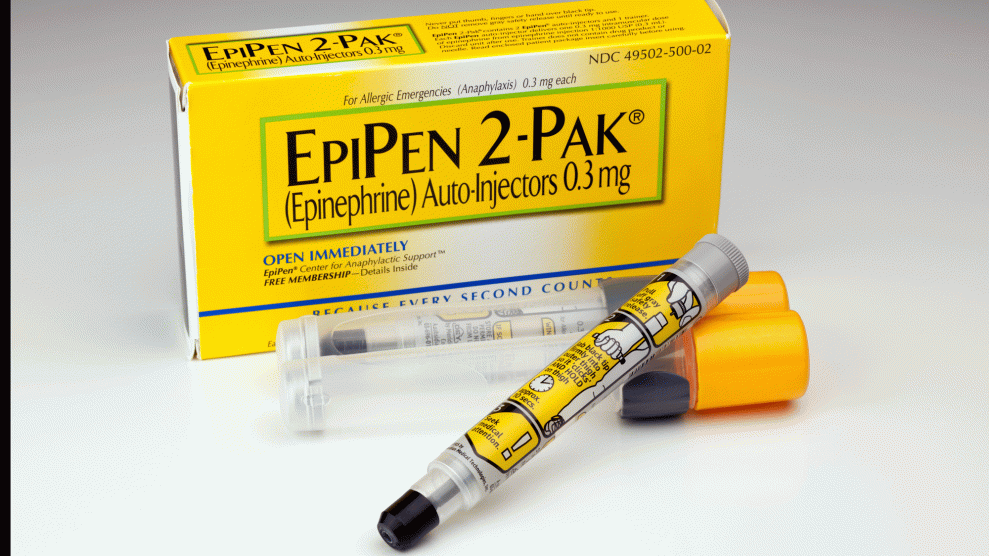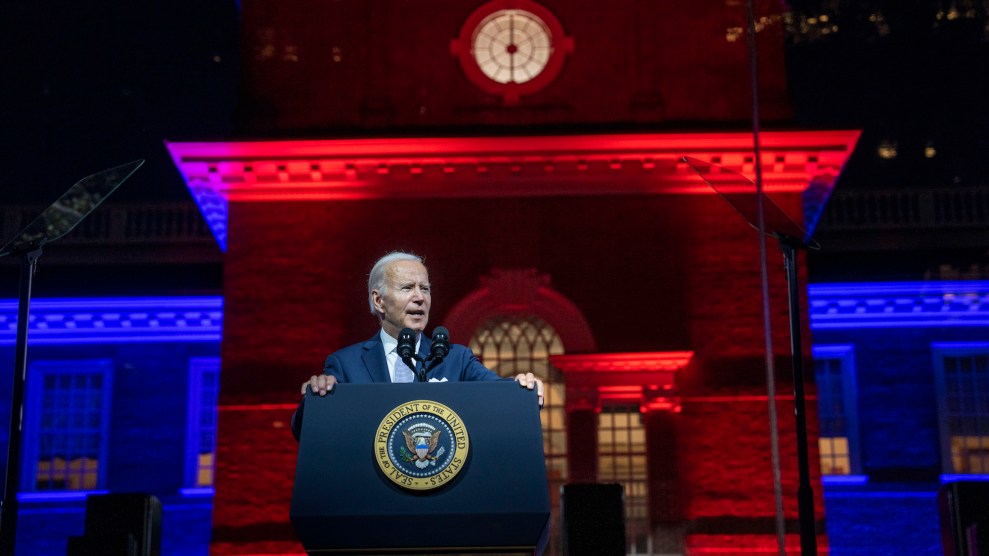
<p><a href="http://www.istockphoto.com/photo/epipen-epinephrine-auto-injector-for-allergic-emergencies-gm458611923-17412151" target="_blank">Roel Smart</a>/iStock</p>
Update, September 7: EpiPen maker Mylan is now under investigation by the New York Attorney General for potential antitrust violations over its deal with New York City schools. The company offered special discounts to schools on bulk purchases of EpiPens—as long as the schools agreed not to buy competing products, STAT reports.
Update, August 30: The House Committee on Oversight and Government Reform has requested documents and information on the EpiPen price hike from Mylan. “While families and schools are struggling to keep up with your company’s unreasonable price increases, Mylan has profited richly from its pricing strategy,” the Committee wrote. Meanwhile, financial analysts predict that Mylan’s move to introduce a $300 generic Epipen will affect its sales “only modestly,” Bloomberg reports. And lastly, the New York Times has the story of a woman whose life has been saved by EpiPens 12 times.
Update, August 29: On Monday, Mylan announced that in a few weeks it will introduce a generic version of the EpiPen for $300, about half the cost of its name-brand product. The New York Times explains that this move is better for Mylan than simply reducing the price of the EpiPen. For starters, in the wake of the pricing uproar, the FDA may soon green light generic versions from other companies. What’s more, says the Times, “Pharmacists in many states will be able to substitute the generic version but in some cases they may not, leaving Mylan with higher revenue than if it had cut the price across the board.”
Update, August 25: On Thursday, Mylan announced that it would discount the cost of the EpiPen for some patients with a coupon for $300 off. The company blamed insurance companies for the high price of EpiPens in its statement: “We recognize the significant burden on patients from continued, rising insurance premiums and being forced increasingly to pay the full list price for medicines at the pharmacy counter.”
Like millions of Americans, I’m allergic to nuts—in my case, specifically peanuts, cashews, and pistachios. Although I try very hard to avoid those nuts, a few times a year I eat them by accident. Nuts can lurk tucked inside innocent-looking muffins or ground up in sauces. Within minutes (sometimes seconds) of eating a hidden nut, blisters bloom in my mouth. If it’s cashews, my throat and chest tighten. As soon as I feel the first tinglings of an allergy, I take a Benadryl, which I carry in my purse.
As nut allergy sufferers go, I’m really lucky: The Benadryl has worked every time. Within about 20 minutes of taking it, I’m mostly recovered, and all that’s left of my allergy is a weird case of the hiccups. But anaphylactic reactions—the suite of symptoms that my immune system causes when I eat a nut—can be really unpredictable. Next time I have a nut accident, my reaction could be much more serious. And that’s why, in addition to Benadryl, I carry an EpiPen, a lifesaving device that’s been in the news lately because of its newly outrageous price tag.
Here’s my #EpiPen, expired for a year because I can’t afford a new one. Thanks, @MylanNews! https://t.co/IKtT9WgWUQ pic.twitter.com/xPi6YTmP26
— Christopher J Scalia (@cjscalia) August 24, 2016
Here’s a quick rundown of what you should know about EpiPens, and why people are so up in arms over their cost:
What are EpiPens, exactly? About the size of a small bottle of sunscreen, EpiPens are syringes preloaded with epinephrine, a drug that can quickly halt a life-threatening anaphylactic reaction. They’re easy to use: You basically jam the device’s needle into the allergy sufferer’s thigh. You don’t need any training; there are simple, clear instructions on the EpiPen packaging.
Who needs them? Doctors wrote 3.6 million prescriptions for EpiPens last year, according to the Wall Street Journal. The National Institute of Allergy and Infectious Diseases recommends [PDF] that the 1-2 percent of Americans who have experienced an anaphylactic reaction to anything—from food to bee stings to medications—carry two epinephrine injections at all times, replacing them yearly as they expire. (Epinephrine degrades quickly, so keeping EpiPens current is essential.) The number of people with allergies is growing: Food allergy incidence in children younger than 18 increased 18 percent between 1997 and 2007. Teenagers are more likely than adults or young children to have an anaphylactic reaction.
What happens if someone has an anaphylactic reaction without access to an EpiPen? They can die. Luckily that’s relatively rare: The American Academy of Allergy Asthma & Immunology says between 63 and 99 people die from anaphylaxis yearly. But life-threatening anaphylactic reactions are common: They send more than 200,000 people to the emergency room every year.
How much do EpiPens cost? The price of a set of two EpiPens is now hovering around $600. That’s more than a 400 percent increase since 2009, when the price was closer to $100. Mylan, the maker of EpiPen, offers a $100-off deal, but not all insurance plans accept the coupon. The New York Times reports that people with high-deductible insurance plans pay around $640, and even those with “good insurance” are paying four times as much for the devices than they have in the past. EpiPens brought in $1 billion for Mylan last year.
Why did the price of an EpiPen go up so much? Because it can. If there were similar devices on the market, Mylan would have to keep its prices low. But there’s practically no competition because it costs so much to get devices like this approved. They have to withstand unusually rigorous testing because a failure could be fatal.
Is Mylan overhyping EpiPens? Are they overprescribed? Probably not. While it’s reassuring that anaphylaxis kills so few people, the condition is also unpredictable: People who have only mild reactions all their lives can (and do) all of a sudden have a severe one. “There are no predictable patterns,” notes Robert A. Wood, a director of pediatric allergy and immunology at Johns Hopkins [PDF]. The whole idea of EpiPens is that they’re easy to use, extremely effective, and small enough to carry around just in case.
Tell me some outrageous things about people who have profited from this price hike. Okay. NBC reports that in 2015, Mylan CEO Heather Bresch—the daughter of West Virginia Sen. Joe Manchin—took home nearly $19 million, up from about $2.5 million in 2007. Mylan has also increased prices more than 20 percent on 24 other drugs, including 542 percent on one gall stone medication, according to NBC.
Does this mean that all shot-makers are cashing in on our problems and therefore we can’t trust vaccines? No.
Is this the first time something like this has happened? Hardly. Price hikes on drugs are pretty common. It’s happened with serum for scorpion bites and lots of drugs for rare conditions. And last year, Turing Pharmaceuticals famously increased the prices of an AIDS treatment and a malaria medication by 5,000 percent. Former Turing CEO Martin Shkreli is now under indictment for securities fraud. Shkreli, by the by, defended Mylan’s EpiPen price increase, telling CBS, “Mylan is the good guy. They had one product, and they finally started making a little bit of money and everyone is going crazy over it.” Thanks for the commentary, “Pharma Bro.“







